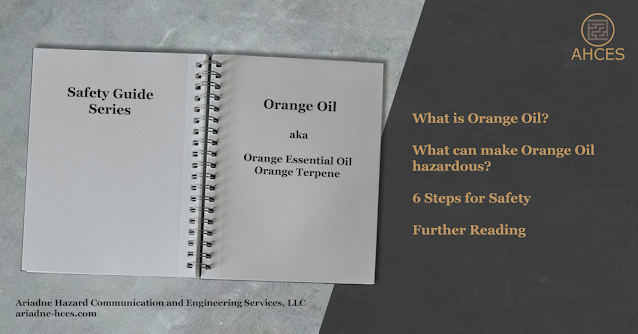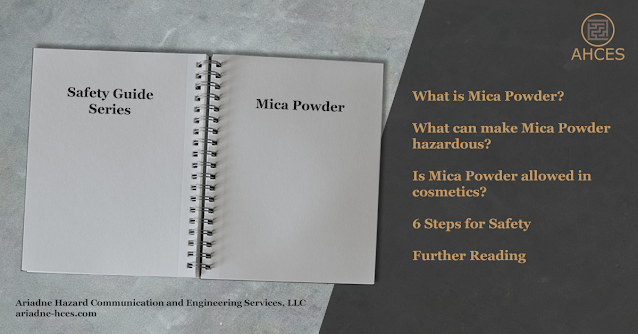Phenolphthalein Safety Guide
What is Phenolphthalein?
Phenolphthalein is a phenol, a type of organic compound. Phenolphthalein is often used as a pH indicator, as it turns from clear to bright pink when in the presence of a pH between 8.3 to 10. This makes it useful for detecting strong bases.
Phenolphthalein has the CAS Number 77-09-8.
Notable Properties of Phenolphthalein
Pure phenolphthalein is a solid, crystalline substance that is white to pale orange in color. It is soluble in both water and alcohol. Many commercially available premade indicator solutions are dissolved in ethanol.
What Makes Phenolphthalein Hazardous?
Phenolphthalein is classified as Group 2B by the International Agency for Research on Cancer (IARC). This means that it is possibly carcinogenic to humans based on current research, including animal studies.
There are also concerns about phenolphthalein having reproductive toxicity and causing germ cell mutagenicity.
The National Toxicology Program (NTP), part of the U.S. Department of Health and Human Services, has partner research being conducted on phenolphthalein to continue to research potential hazards.
The European Chemicals Agency (ECHA) also reports phenolphthalein as a possible carcinogen, suspect of causing genetic defects, and suspected of damaging fertility.
Phenolphthalein Frequently Asked Questions
Is phenolphthalein dangerous?
Current research indicates that phenolphthalein is potentially hazardous to human life, including being a potential carcinogen, mutagen, and reproductive toxin. Further study is required to confirm the degree to which phenolphthalein is harmful, as well as the mechanism.
For the purposes of reducing potential harm as much as possible, phenolphthalein should be handled with care. This includes minimizing exposure and using appropriate PPE when handling phenolphthalein.
Is phenolphthalein safe to store at home? How to store phenolphthalein?
Phenolphthalein can be stored in the home safely. Due to the potential toxicity, it should be kept in a well-sealed container. The phenolphthalein should also be stored close to the workplace to minimize the possibility of accidents in transport. It may also be necessary to keep the storage area locked to prevent unauthorized access.
Since phenolphthalein is an organic compound, and many liquid phenolphthalein solutions are dissolved in ethanol, it can act as a fuel source in a fire. Be sure to follow appropriate fire safety measures, including having a fire extinguisher available.
6 Steps for Safety
Step 1: Read the Warnings
When working with a product for the first time, always read all the safety documents first. This includes safety data sheets, which should be provided by the manufacturer or importer of the phenolphthalein containing product. There may also be an OSHA chemical label or a Consumer Protection label on the packaging of the phenolphthalein containing product. These documents all contain important information on the hazards of the product and instructions on how to mitigate those hazards.
Different compositions in different products may cause additional hazards to be present beyond the properties of pure phenolphthalein. Be sure to familiarize yourself with the differences between separate phenolphthalein products.
For example, a pre-made phenolphthalein pH indicator solution dissolved in alcohol may have additional flammability concerns compared to pure, solid phenolphthalein.
Step 2: Prepare Your Workspace
Creating a safe workspace, sometimes referred to as engineering control, is a key component of working safely with any potentially hazardous substance.
Since the primary hazard of phenolphthalein is potential carcinogenicity and reproductive toxicity, efforts should be made to minimize ingestion and exposure to phenolphthalein.
For dry phenolphthalein, which can become an airborne dust, an air purifier with filters rated for organic compounds can be used to minimize the chances of inhalation.
For liquid phenolphthalein, liquid spills require prompt cleanup to minimize spread and potential contamination to other areas. A spill kit should be kept on hand with adsorbents available to clean up any liquid spill.
Step 3: Gather Your PPE
For working with phenolphthalein, the following PPE may be useful depending on the quantity of material being handled.
When working with multiple hazardous materials, be sure that all PPE is compatible with all materials. Phenolphthalein is often used as a pH tester for strong bases. If this is the case, be sure any PPE such as rubber gloves are resistant to the base and will not dissolve or be weakened during work, rendering them ineffective.
- Respiratory Protection
- A respirator with appropriate particle filters and organic vapor filters is the best means to prevent accidental inhalation of phenolphthalein.
- Gloves
- Rubber gloves should be worn to minimize the chance of accidental skin contact.
- Long Sleeves
- Long sleeves will prevent phenolphthalein from touching the skin on the arms. Either a long-sleeved shirt, long-sleeved coat, or disposable sleeves will work.
- Launder any contaminated closing separately to prevent cross-contamination and inform anyone laundering the clothing of the presence of phenolphthalein so they can take any necessary precautions.
Step 4: Clear Your Workspace
Having a clear workspace is an important part of safety. Clutter can cause accidents and can prevent you from noticing if something has spilled.
This is also a good time to double-check any engineering controls in place, including filters on air purifiers.
If you are working in a shared space, make sure anyone around you can remain safe while you are working with phenolphthalein.
Step 5: Do The Work
When proper precautions are taken, working with phenolphthalein can be done safely.
If work cannot be completed in one sitting, be sure to properly seal any phenolphthalein containers to prevent spills or accidental release when not in use.
Step 6: Clean Up
For cleaning up spills of solid phenolphthalein, use ethanol to dissolve the material first before wiping up with absorbent paper. For liquid spills, wipe up directly with absorbent paper.
Seal any contaminated items in a plastic bag for disposal. This includes both absorbent paper and any clothing that may have been contaminated.
Be sure to dispose of any waste in accordance with local regulations.
Further Reading
The National Library of Medicine has a PubChem article on Phenolphthalein
Check out the Safety Guide Series Hub for more safety guides.
Sources Cited
Clark, J. (2013, November). ACID-BASE INDICATORS. chemguide.co.uk. https://www.chemguide.co.uk/physical/acidbaseeqia/indicators.html
ECHA European Chemicals Agency. (2023, September 6). Substance information - ECHA. ECHACHEM. https://echa.europa.eu/substance-information/-/substanceinfo/100.000.914
National Center for Biotechnology Information (2025). PubChem Annotation Record for PHENOLPHTHALEIN, Source: Hazardous Substances Data Bank (HSDB). Retrieved August 15, 2025 from https://pubchem.ncbi.nlm.nih.gov/source/hsdb/4161.
National Center for Biotechnology Information (2025). PubChem Compound Summary for CID 4764, Phenolphthalein. Retrieved August 15, 2025 from https://pubchem.ncbi.nlm.nih.gov/compound/Phenolphthalein.
National Oceanic and Atmospheric Administration (n.d.). PHENOLPHTHALEIN. CAMEO Chemicals. Retrieved August 15, 2025, from https://cameochemicals.noaa.gov/chemical/20885
World Health Organization. (2025, June 27). Agents classified by the IARC monographs, volumes 1–139. World Health Organization. https://monographs.iarc.who.int/agents-classified-by-the-iarc/





Comments
Post a Comment